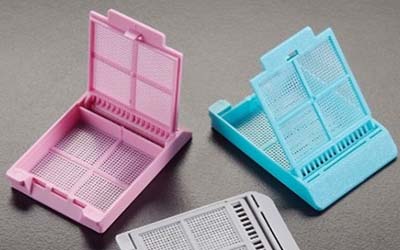In Part 1 of this series, we discussed enhanced methods to guard against specimen loss during tissue fixation and processing. In this second part, we will continue that discussion from the perspective of biopsy cassettes; those tissue containment devices designed specifically for small particulate tissue matter and debris. Given that Part 1 focused on internal cassette items (lens paper, biopsy bags, sponges, etc.) that could be used inside any type of standard tissue cassette, the high risk of specimen loss obviates the need for specialized cassette designs.
Biopsy cassettes are designed with the goal of minimizing or eliminating the possibility of a cassette opening during processing, or tiny particulate matter or small tissue escaping through whatever pore system is designed into the cassette.
Commercial manufacturers have addressed this by various means such as ultra-minute pore sizes, biopsy screens, tiny internal compartments separating tissues, and enhanced locking mechanisms. In the four images to the right, you can see two types of biopsy cassette designs on the top row. The top row image on the far right shows a standard biopsy cassette design. The top left design shows an enhanced ‘micromesh’ design with a pore size of almost half of the right image.
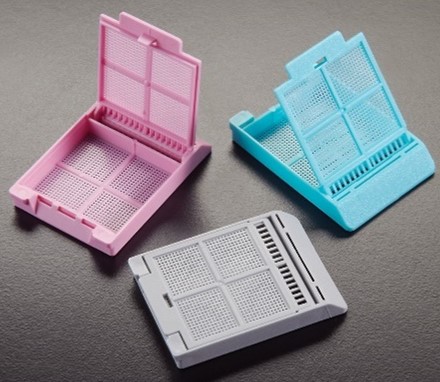
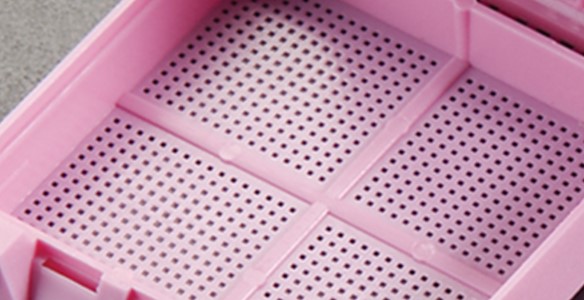
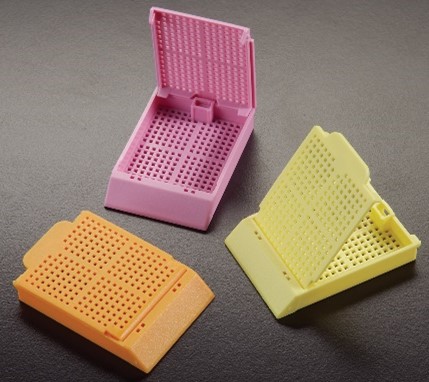
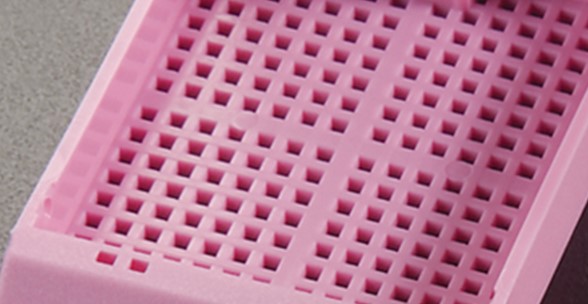
This ‘micromesh’ type design has a pore size of approximately .38mm. The lower row illustrates zoom images of the top row. This clearly shows how manufacturers have gone to great lengths to reduce/eliminate the possibility of tissue loss. To maximize risk reduction, some laboratories will use one of the devices from the previous article (such as lens paper), along with either of these two types of biopsy designs. However, the ‘micromesh’ example was designed to eliminate the need for such internal containment devices. Technicians have the option but both designs are very successful in tissue containment.
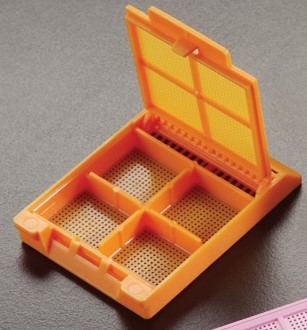
Other manufacturers have even departed from the acetyl polymer plastic molding commonly used in cassettes and used actual tiny screens to protect against tissue loss. The image to the top right shows the tiny mesh screen design within an inner compartment in the cassette. This offers double security of an individual compartment and a minute pore-sized screen. For applications specific to tissues such as needle core biopsies, where it is critical to process, embed, and section the length of the biopsy as one long unbroken core, a mesh screen design satisfies that need.
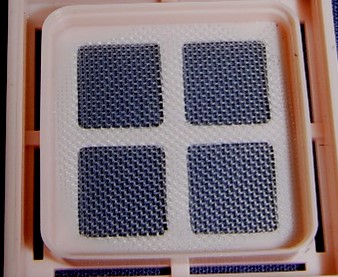
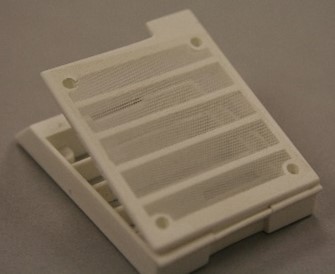

- Brown, H. Skip, ‘Small Specimen Management-In a Large Volume World’, Workshop in small specimen management, Lab Management Consultants, 2008.
- McCormick, J.B., “From Hunks to Snippets-Part 1 – Embedding for Microtomy”, Workshop in historical innovations in embedding, Science Heritage, LTD, 2007.
- McCormick, J.B., “Snippetology-The Science of Small Specimen Management”, Science Heritage LTD., 2006.
- www.labstore.com

